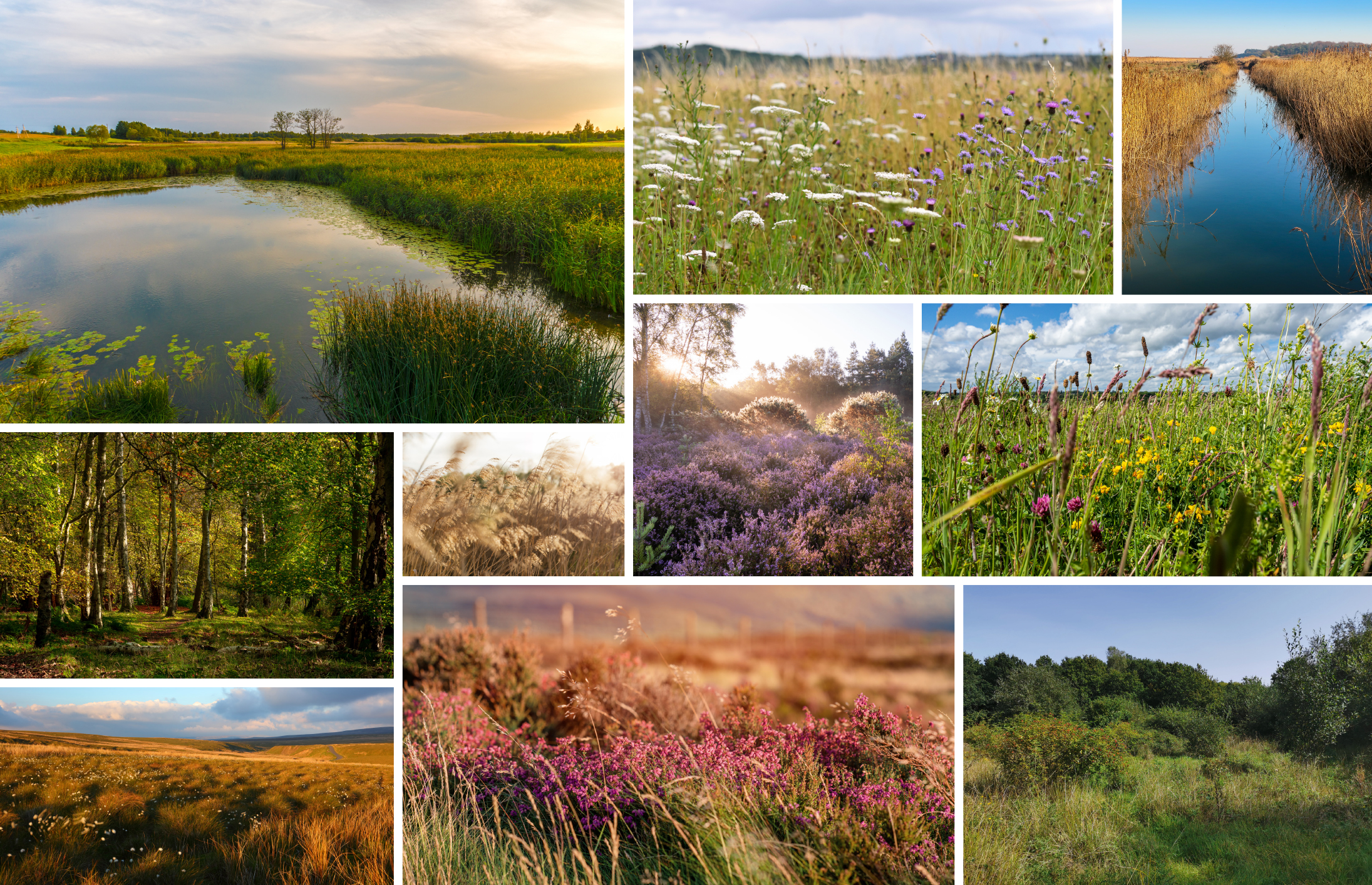BIODIVERSITY NET GAIN
Understanding Off-site BNG: Land Banking vs Habitat Banking
Three years since it was laid out in the Environment Act 2021, the policy for Biodiversity Net Gain (BNG) has now been scheduled to take effect on Monday 12th February 2024.
Designed to help England’s ecosystems recover, BNG will require developers to deliver a minimum of 10% net gain in biodiversity for each development project.
Developers will have the choice of delivering BNG on the development site itself, elsewhere, or typically a combination of the two, and there is much discussion currently underway regarding the best approach to take.
It's highly expected that all developers will likely need to deliver at least some BNG off-site at some point. Whether they need off-site Biodiversity Units to account for their entire project (likely required for large industrial or commercial projects) or simply to cover what they cannot deliver on-site, developers will need to know how to source quality Units – ones that guarantee their BNG obligations are met.
Developers may choose to deal directly with a landowner and create their own off-site Units, or they may choose to use a specialist third-party provider who can remove a lot of the risk.
Which brings us to ‘land banking’ and ‘habitat banking’ Biodiversity Unit providers – because understanding the difference between the two will be vital for finding robust solutions that are fit for purpose.

What is the difference between ‘land banking’ and ‘habitat banking’?
Broadly speaking, third party BNG providers will fall into two categories. To draw a clear distinction between them:
‘Land banking’ providers have a portfolio of land on which they plan to create and enhance habitats and generate Biodiversity Units once these Units have been sold to a developer, with work only starting after an agreement has been made.
Whereas ‘habitat banking’ providers have a portfolio of nature restoration sites where habitat creation and enhancement is already in progress – allowing them to offer developers a stockpile of Biodiversity Units that already exist.
In other words... habitat banks are sites with seeds in the ground, while land banks are promises on pieces of paper.
A developer purchasing Biodiversity Units from a ‘land bank’ would be reserving something that doesn’t yet exist. By contrast, a developer purchasing Units from a habitat bank could visit that site if they so wished and witness nature restoration in progress, because work is already underway.
Why is this distinction important for developers?
The process of creating habitats for BNG is complex, involving extensive surveys by expert ecologists who can properly evaluate if biodiversity gains are genuinely achievable. These ecologists will need to have a comprehensive understanding of Natural England’s biodiversity metric.
It’s worth noting that the biodiversity metric actually rewards the habitat banking model through its temporal multiplier. As soon as a habitat bank goes live, its biodiversity value begins to increase – with the same piece of land worth more Units every year of its lifetime.
With this in mind, a developer should consider how a ‘land banking’ provider intends to deliver BNG. As the BNG market is still very new, a ‘land banking’ provider is unlikely to have yet demonstrated a track record for habitat creation and Biodiversity Unit generation. If there is any uncertainty as to whether they can deliver the promised biodiversity gains, they risk putting developers in breach of their planning obligations.
‘Land banking’ providers can secure land and begin selling Units without having conducted extensive ecological baseline surveys – including vital measurements of the soil health. Without this data, it’s impossible to say for certain whether the land is even capable of yielding the promised biodiversity gains.
Contrastingly, ‘habitat banking’ providers should be able to clearly demonstrate their track record for habitat creation. At each site in their portfolio, surveys should have been completed, habitat plans should be in place, and work will be already underway.
The tangible evidence offered by ‘habitat banking’ providers can therefore give developers confidence that their project won’t face the risks associated with inadequate Biodiversity Units that fail to generate the required gains or promise gains that aren’t even achievable.

Explore our Habitat Bank network
Discover more about the role of off-site Biodiversity Units
Developers will not always be able to deliver an entire project’s BNG on-site, and many will have identified the strategic and cost-effective advantages of quality off-site options, so they will need to be able to identify the off-site Biodiversity Units that can reliably deliver on what they promise.
Quality off-site options can really help to minimise costly and disruptive delays in the planning process.
To learn more about integrating off-site Biodiversity Units into an effective BNG strategy, please watch our recent webinar on-demand:
WEBINAR
Harnessing off-site Biodiversity Units: the key to a successful BNG strategy
To meet BNG requirements and satisfy trading rules, it’s highly likely that off-site Biodiversity Units will play a role in all developer’s BNG strategies at some point. Developers will want to know what’s available to them, how off-site Units work, and how they can be incredibly effective.
We will explore the scope of options for BNG delivery off-site – with valuable insight from developers and ecologists already tackling BNG. Environment Bank’s planning and legal experts will then explain how to source high-quality, cost-effective Biodiversity Units to help facilitate and expedite the planning process and ensure long-term success.

